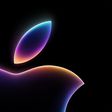Apple Looks at Using Wearable Sensors to Auto-Adjust iPhone Notifications and Alarms
The U.S. Patent and Trademark Office today published several patent applications describing an iPhone-based system to collect and analyze data from wearable and other types of accessory sensors, reports AppleInsider. Under the system, the iPhone could then track the owner's activity and respond with appropriate notifications and changes in the device settings.
One patent application, "Method and apparatus for automatically setting alarms and notifications," describes a method of associating motion data with a set of alarms. In this described invention, the iPhone could detect whether a user is sleeping or awake and adjust the settings for features such as "Do Not Disturb," for example. These motion data points may be collected from a device that is worn by the user.

In a second patent application, "Method and apparatus for automatically repeating alarms and notifications in response to device motion", Apple proposes methods to control the timing of notifications that are delivered to an iPhone owner. In this invention, the iPhone can use sensor data to determine when a user is napping and can turn off all notifications until the owner is awake and moving again.
A final patent application, "Method and Apparatus For Personal Characterization Data Collection Using Sensors," describes how an iPhone-driven system could detect a user's activity level from "motion sensors, location sensors, ambient light sensors, and the like." This sensor-based data may be used to create a "personal scorecard" that compares your activity level to others in a group.
A processor-based personal electronic device (such as a smartphone) is programmed to automatically collect data sent by various sensors from which the user's activity may be inferred. One or more of the sensors may be worn by the user and remote from the device. A wireless communication link may be used by the device to obtain remote sensor data. In certain embodiments, data from on-board sensors in the device--such as motion sensors, location sensors, ambient light sensors, and the like--may also be used to deduce the user's current activity. In yet other embodiments, user data (such as calendar entries) may also be used to characterize the user's activty.
As with many patent applications, these inventions may or may not be incorporated into consumer-level products. In this case though, these methods align with Apple's rumored iWatch device, which is expected to ship with a variety of sensors to measure basic health and fitness parameters. Apple also recently announced a new Health app and HealthKit API that allows for the aggregation of health and fitness data from apps and wearable devices into a central repository that can provide an overview of a user's relative health.
Popular Stories
Apple released iOS 18.2 in the second week of December, bringing the second round of Apple Intelligence features to iPhone 15 Pro and iPhone 16 models. This update brings several major advancements to Apple's AI integration, including completely new image generation tools and a range of Visual Intelligence-based enhancements. Apple has added a handful of new non-AI related feature controls as...
Wednesday December 18, 2024 11:39 am PST by
Juli CloverApple is no longer planning to launch a hardware subscription service that would let customers "subscribe" to get a new iPhone each year, reports Bloomberg's Mark Gurman.
Gurman first shared rumors about Apple's work on a hardware subscription service back in 2022, and at the time, he said that Apple wanted to develop a simple system that would allow customers to pay a monthly fee to gain...
Blackmagic today announced that its URSA Cine Immersive camera is now available for pre-order, with deliveries set to start late in the first quarter of 2025. Blackmagic says that this is the world's first commercial camera system designed to capture 3D content for the Vision Pro.
The URSA Cine Immersive camera was first introduced in June, but it has not been available for purchase until...
Apple launched the controversial "trashcan" Mac Pro eleven years ago today, introducing one of its most criticized designs that persisted through a period of widespread discontentment with the Mac lineup.
The redesign took the Mac Pro in an entirely new direction, spearheaded by a polished aluminum cylindrical design that became unofficially dubbed the "trashcan" in the Mac community. All of ...
It's looking like 2025 is going to be an important year for Apple, with the company planning to revamp the iPhone, push further into smart home products, and improve Apple Intelligence. There are tons of new products rumored for 2025, including new iPhones, M4 Macs, a smart home command center, and much more.
We've highlighted the top five Apple products that will have the biggest impact in...
The current Apple TV 4K was released more than two years ago, so the streaming device is becoming due for a hardware upgrade soon. Fortunately, it was recently rumored that a new Apple TV will launch at some point next year.
Below, we recap rumors about the next-generation Apple TV.
Bloomberg's Mark Gurman last week reported that Apple has been working on its own combined Wi-Fi and...
Contrary to recent reports, the iPhone 17 Pro will not feature a horizontal camera layout, according to the leaker known as "Instant Digital."
In a new post on Weibo, the leaker said that a source has confirmed that while the appearance of the back of the iPhone 17 Pro has indeed changed, the layout of the three cameras is "still triangular," rather than the "horizontal bar spread on the...
Wednesday December 18, 2024 10:05 am PST by
Juli CloverElevation Lab today announced the launch of TimeCapsule, an innovative and simple solution for increasing the battery life of Apple's AirTag.
Priced at $20, TimeCapsule is an AirTag enclosure that houses two AA batteries that offer 14x more battery capacity than the CR2032 battery that the AirTag runs on. It works by attaching the AirTag's upper housing to the built-in custom contact in the...
























